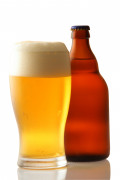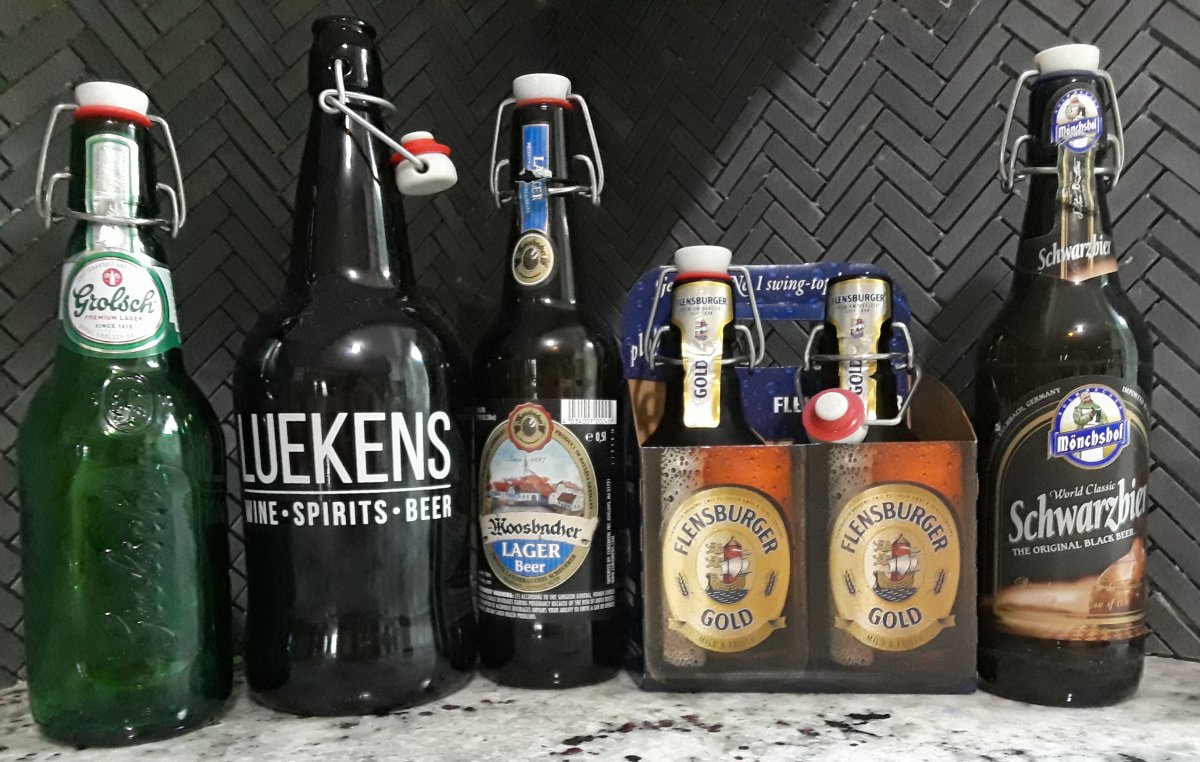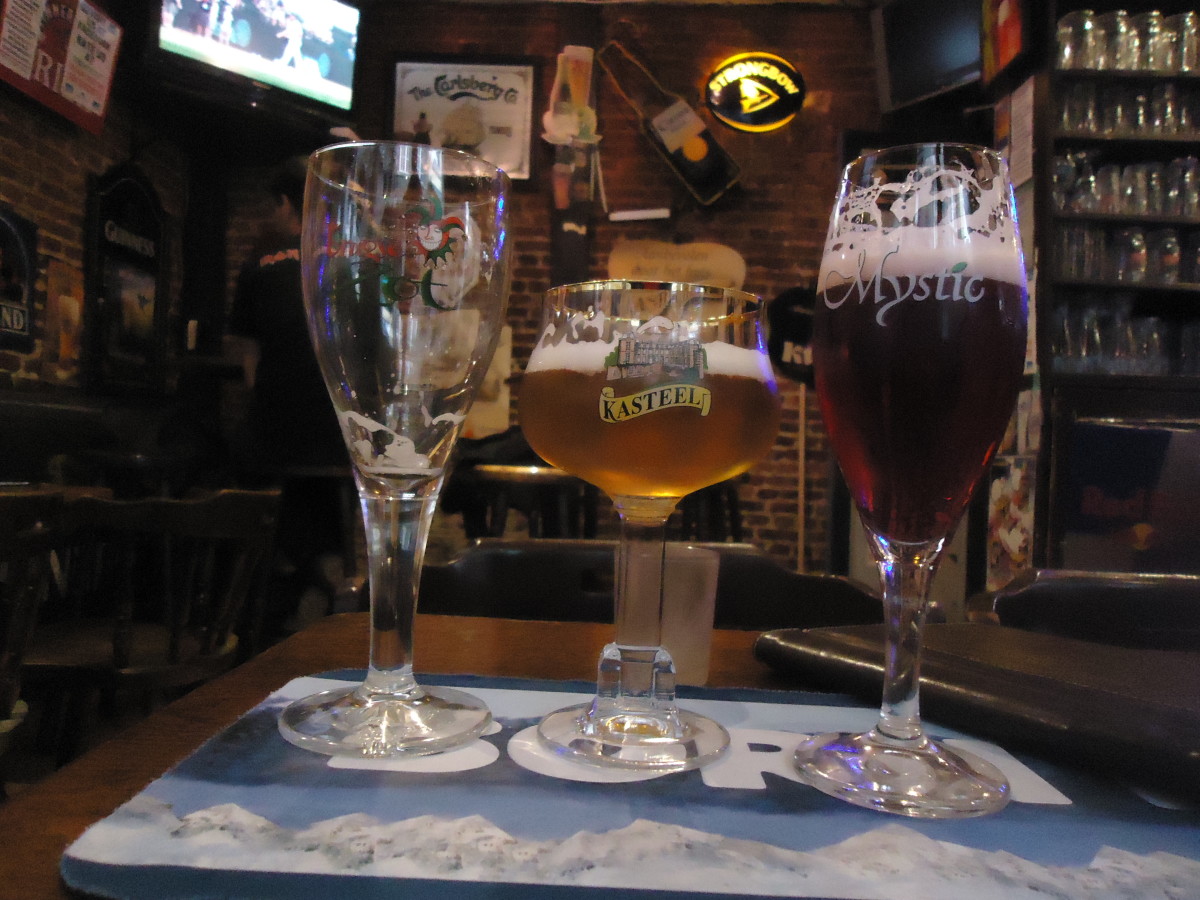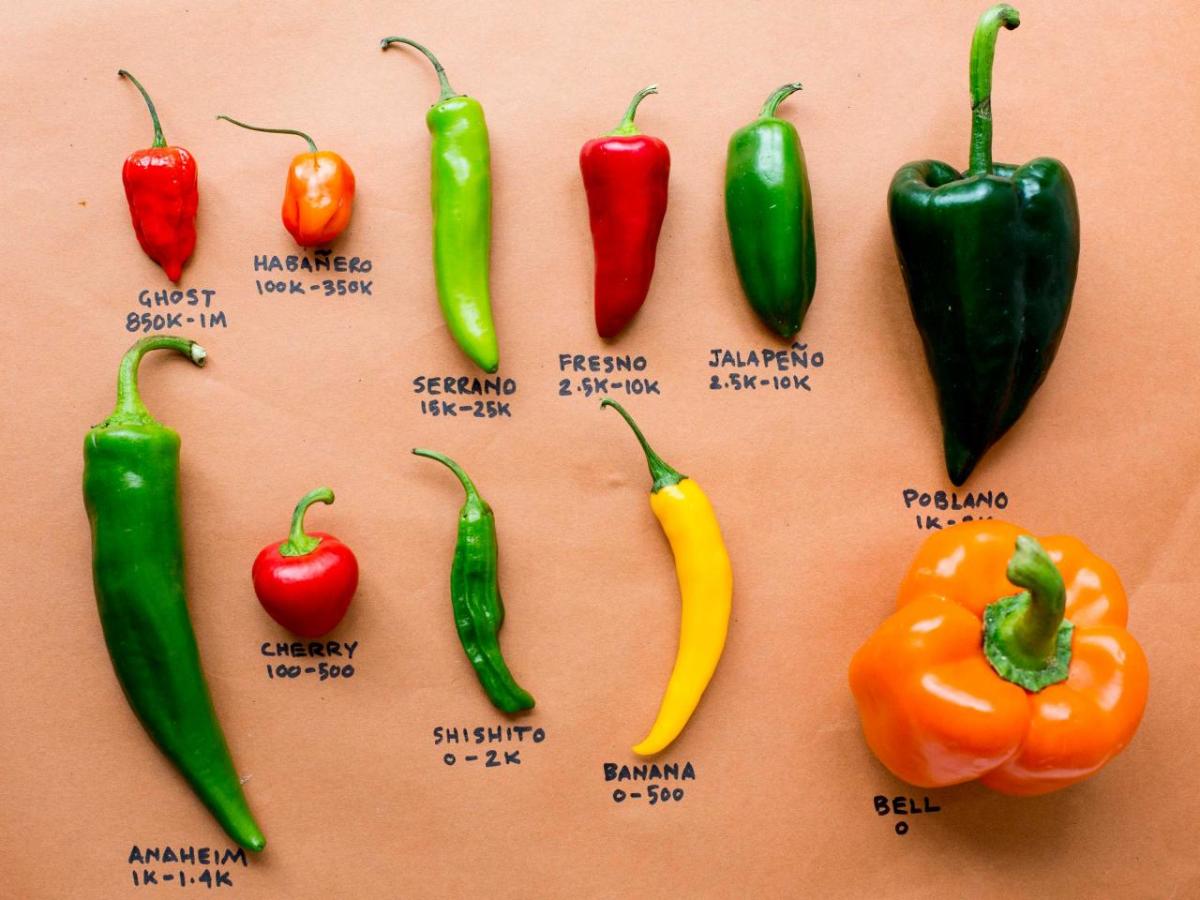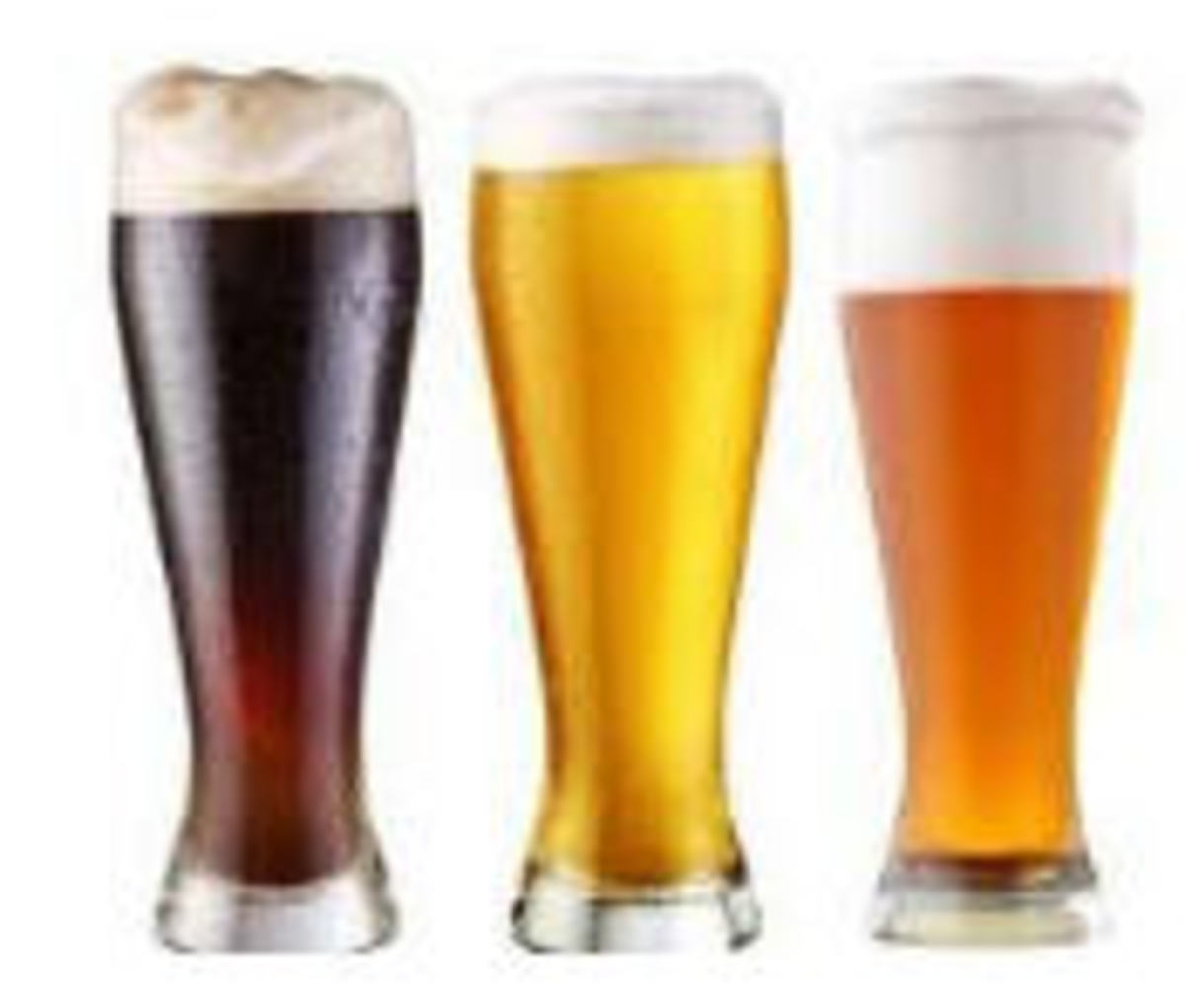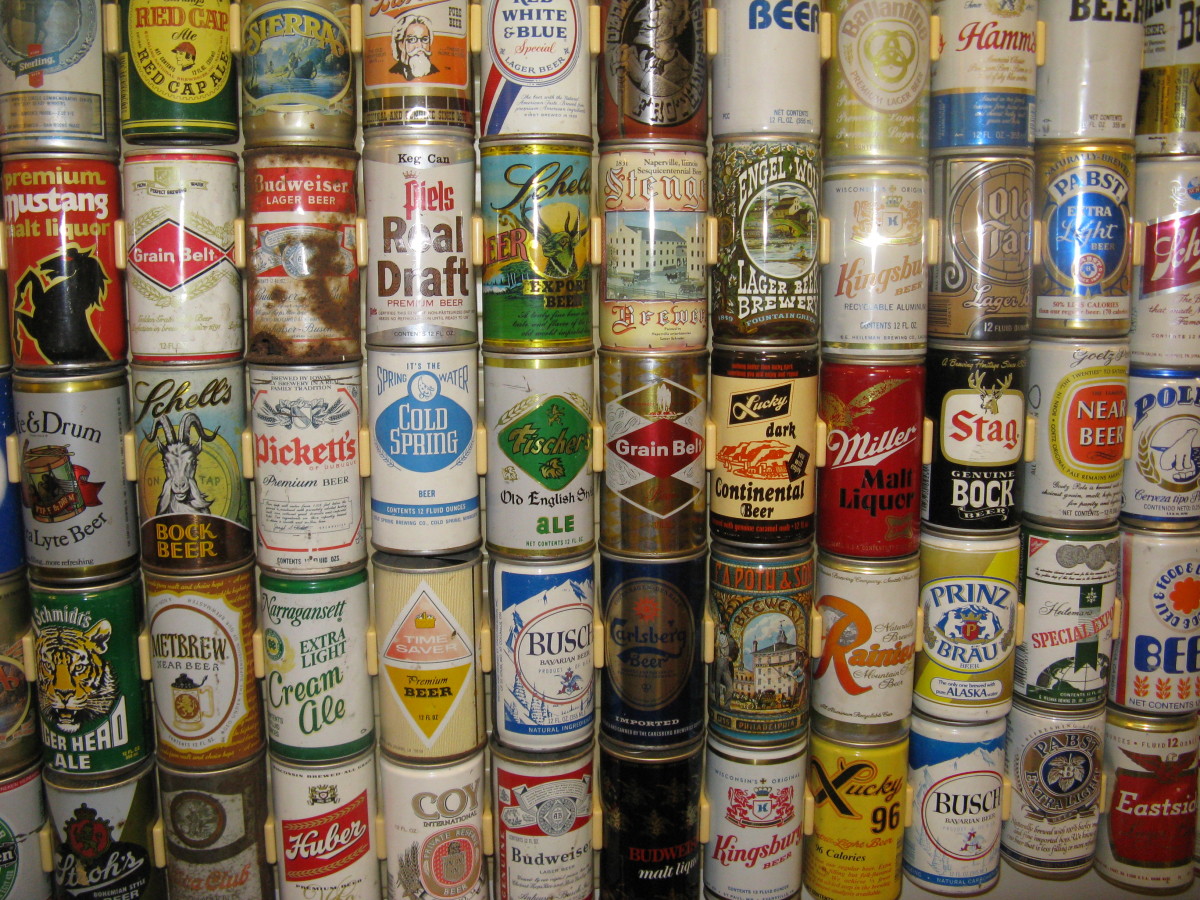Brew Food -- a Primer for Cooking with Beer
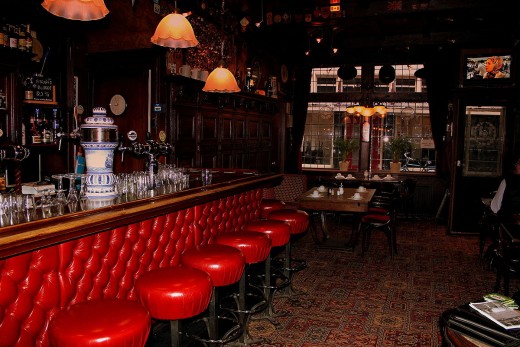
While I was out east working for the CDC, I also worked as an independent contractor for a local newspaper covering the local bar scene. For the most part, those old articles would not be of much use here, but this was is. It was an article I wrote for a St. Patrick's Day special spread in the Food section on how to cook with beer, back in 2010. Some of the people I interviewed are in the same location and others have moved on, and a couple I have no idea about. Still, their advice is sound -- I've used it and my recipes have turned out beautifully! I hope you enjoy.
Beer has often been referred to as liquid bread, having the common ingredients of grain, yeast, and water – you can even consider hops an herb. It was even used for religious purposes during fasting periods, supplying monks with much-needed calories. Not only can beer be used as food, it also makes for an excellent addition to a cook’s arsenal. Beer, much like wine, can be used for a variety of purposes when cooking, typically as a replacement for any liquid in a recipe.
Jody Krout, a former chef from Huntsville, Alabama, is researching and creating beer recipes for a book. “Cooking with beer gives it a unique flavor,” Krout said. “It puts a different spin on a recipe. It makes it more personal.”
Adam Kraycar, head cook at the Morgantown Brewing Company, in Morgantown, West Virginia, agrees. “It gives our recipes a signature taste,” he said, referring to his use of MBC’s on-site brewed beers.
At Piper’s Pub, a Scottish pub in Pittsburgh’s South Side area, head chef Alex Peightal also uses beer in his recipes. Before then, he had been cooking with wine at other dining establishments for some time. “When I started cooking at Piper’s I was a line cook, and the chef incorporated beer into his cooking. My eyes opened up then. Using beer adds elements that might be missing. You get little nuances that you can’t duplicate with herbs and sauces. It adds a different dimension.”

And he’s not the only one to have his eyes opened to the powers of beer in cooking. Malinda Mosholder, general manager of The Getaway, a beer bar in Morgantown, has been cooking with beer since she realized she didn’t have enough liquids for her chili and needed to substitute something. “I was shocked that I had been drinking beer for so long and never realized its culinary potential.” She said. “My cooking habits were forever changed after dumping a Busch Light into my chili that day. It’s a fun, easy way to put some twists on recipes you already have mastered.”
Not a restaurant chef, Mike Whitten, a member of a local home brewing group, has a laid back attitude toward cooking with beer. Speaking of his last batch of stew, he said he used a couple of stray Miller Lite bottles that were lying around for a change and admits that “I have never had the results that I had like that before. I think the beer fairies snuck into my kitchen that night.”

Beer Styles
While there are many beer styles, cooking with beer places them into just a few broad categories.
Malty beers can add richness to a dish, adding their sweetness to recipes. This can help balance foods with acidic tastes, such as fruits and vinegars. Being thick and hearty, these beers are used a lot in gravies and broths. Try a brown ale, stout, porter, Scotch ale, or bock. The roasted grains of stouts and porters can also add another flavor to dishes.
Bitter beers work well with sweet foods, balancing out the sugars. Most vegetables go well with a bitter beer. Pale ales, extra special bitters, and some pilsners fit this category, but cooks should be careful of how strong the beer is. Some styles, such as the imperial pale ale, can have a lot of hops in them, making them too bitter to cook with.
Wheat beers can add an extra layer of grain flavors, especially with bread recipes, but can sometimes make the final result too grainy.
Fruited beers, such as lambics, can add another level of flavor, but one must take care that both the beer and the fruit flavor match the dish being prepared.
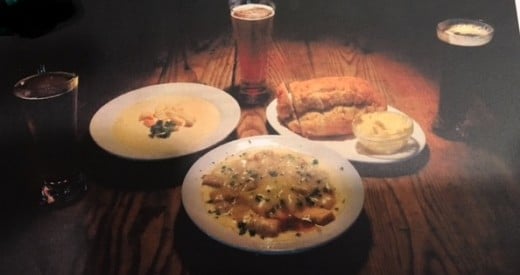
Cooking Techniques
Beer can be used for nearly any technique a cook would like to employ. One of the easiest methods of cooking with beer is when steaming or boiling foods. Peightal uses Boddingtons ale for the restaurant’s shrimp cocktail and Krout recalls his father grilling hot dogs, “but he would wrap them up in foil, with beer inside to steam them. I haven’t tried that myself yet, but I have boiled Polish sausage in lagers.”
Another easy way to incorporate beer is as a marinade. Beer tenderizes meat extremely well, and is a way of trying different styles of beer to see how they influence flavor. Beef and game make excellent meats to try this with, as the beer flavors will come through, but not dominate the meat itself, although lighter meats can also benefit from a beer marinade.
Krout prefers to use a dark beer, typically a porter or stout, “when marinating pork or chicken, I’ll use pale ales or wheat beers. Something lighter, such as Sam Adams Cherry Wheat on pork.”
Gravies, stews, and soups are natural combinations with beer. Both the malty and hoppy beers can be used, depending on what flavor profile you want. The darker, meltier beers have found their way into many chili recipes and stew gravies, while the hoppier beers have more often found a home in lighter soups, such as French onion and cheese soups.
Kraycar incorporates brewer Brian Anderson’s beers in the brewery’s soups. Coal City Stout is used in the chili. “It gives it a dark and rich taste,” and he said he uses Zack Morgan’s IPA in the French onion soup, since “the IPA has a lighter flavor.” Kraycar also uses MBC’s brown ale in place of beef broth on occasion.
Whitten said he uses a variety of beers in his stew recipes. “Even though I’m a porter drinking man, I don’t prefer it for my stew,” he said. “To me, it just doesn’t give the finishing quality that I prefer. Two of my favorites so far have been Warsteiner and the kolsh by Shiner.”
Mosholder said she prefers using a malty beer when cooking beef, but has found “that a more hoppy beer is better used with whiter meats, and absolutely with seafood.” She had been creating many beer-infused soup recipes made with the beers The Getaway has on draft.
Would you like to see some hubs/posts that have actual "cooking with beer" recipes?
Beers can also be used when a recipe calls for reduction, giving a different flavor profile than wine or broth would. As with any other liquid, though, as the water portion is cooked off, its flavors will become enhanced. With malty beers, this may create a very roasted or overly sweet flavor. With hoppy beers, this can create a very bitter flavor. Generally, malty beers are added toward the beginning of the boil, allowing the roasted and sweet flavors to merge with the ingredients. The hoppier beers will sometimes be used toward the end of cooking. This will instill the flavor of the beer, without intensifying its bitter aspect.
Peightal uses the “it-was-there” theory sometimes, when it comes to using reducing beer. “I’ll have a beer in my hand while cooking, so I’ll reduce some of it and throw it on top of whatever I’ve made.”
Breads and batters have been popular beer-cooking methods, as anyone who has ever had beer-battered fish can attest to. Not only do different beers impart their specific flavors, but the yeast in the beer can be used as a leavening agent, to help puff up the batter. Lighter beers can also add a zest to pizza crust, pancakes, and biscuits.
Kraycar makes beer bread at the MBC, but goes a step further by “using the grains from the brewing process.”
Whitten also has his own method: “I prefer for the beer batter the use of greater hops to counter balance the sweetness of the fish or vegetable,” he said. “So an IPA comes to mind rather than a simple lager.”

Courses
Beer can be incorporated into any course of your dinner. Starting with appetizers and ending with desserts, it adds a unique flavor to any part of your meal.
While Peightal doesn’t do much with breads or desserts, “I will do everything in between,” he said. Piper’s Pub offers several dishes that use beer, including Guinness stew and a shepherd’s pie with Scotch ale gravy. “I play around a lot and found you can get a good kick from using stout in barbecue sauce. Beer mustard is always good, too.”
Krout says he prefers using beer with entrees. “I like to choose the beer depending on the type of meat,” although the recipe he’s worked on the most is “chili, definitely. I marinate the meat in beer for several hours before cooking it.”
And Kraycar is all about experimentation. Besides soups, he uses ale instead of wine for pasta sauce. “I have a recipe for stout ice cream that I would like to try,” he added.

Final Advice
Cooking with beer is like cooking with anything else. The more you do it, the better your recipes will become, the chefs said.
“Just tailor to your tastes.” Krout said.
The main advice Mosholder gives to people is “the same as cooking with wine. If you wouldn’t drink it, don’t use it. Cooking with beer is a fun way to take some recipes to the next level, and also come up with some new ones.”
“Experiment, try, see what it does,” Peightal offered. “I play, I experiment. Sometimes you’ll mess up. Just try again.”
Cooking with beer can be a rewarding experience. Not only does it add a unique flavor to foods, but it allows you to grow in experience as a cook. Just remember: if it tastes good to you, you’re doing it right.
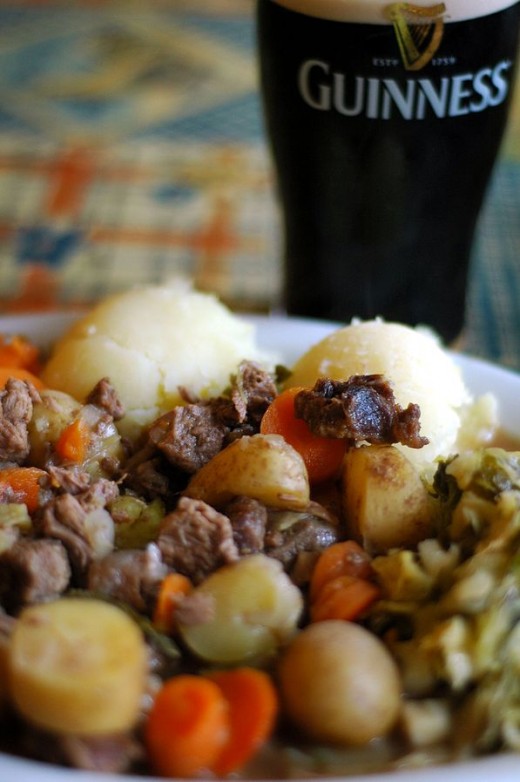
© 2015 James Slaven

